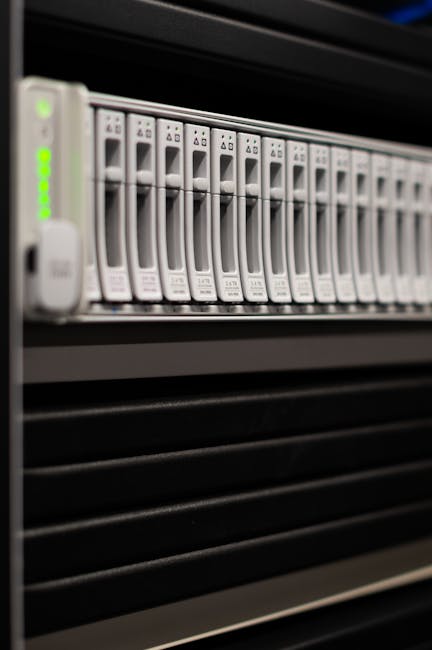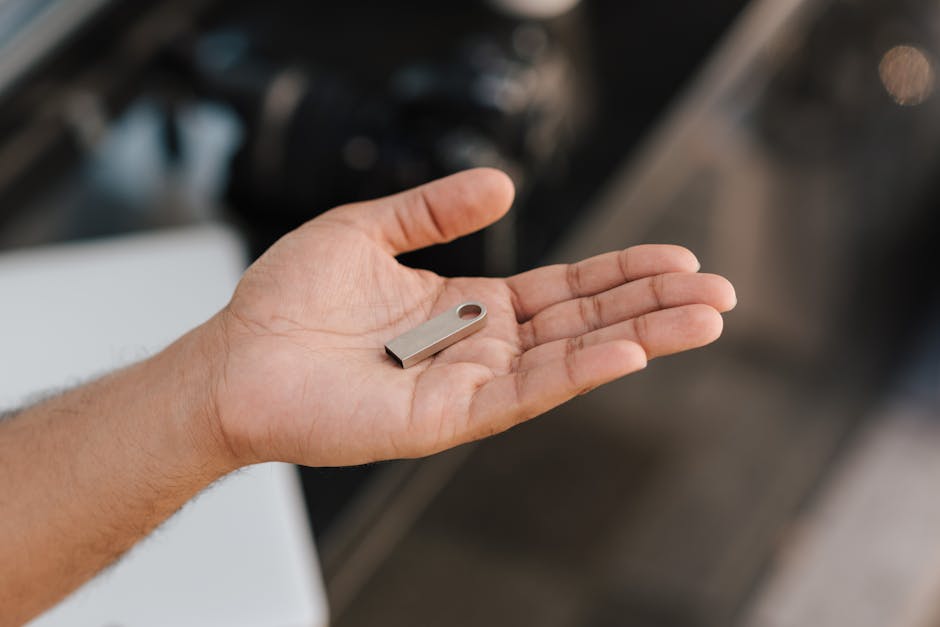Unlock encrypted content
Please enter your SSCE key to initiate on-the-fly decryption.
Decryption key: (Click cancel if you don't have the key)
Copied link to clipboard.
This feature is unavailable for free accounts. Upgrade now and enjoy all Premium benefits.
Go Premium!
This feature is unavailable for free accounts. Upgrade now and enjoy all Premium benefits.
Go Premium!
Please open this page in browser ( Google Chrome or Safari ) to use this feature.
Open In Browser
Modern Solutions for File Management and Storage
Random related video for this blog.
Copied share link to clipboard.
With the advancement of technology, traditional methods of file management are being replaced by more efficient and futuristic solutions. Artificial intelligence, data synchronization, and advanced downloading tools are just a few of the cutting-edge features that are revolutionizing the way we handle our files. In this article, we will explore the latest trends in file management and storage, and how these innovations are reshaping the way we upload, copy, move, and share our files.
Artificial Intelligence: Transforming File Management
Artificial Intelligence (AI) has made significant strides in recent years, and its impact on file management cannot be understated. AI-powered file management systems utilize machine learning algorithms to automate various tasks, making file organization and retrieval seamless and efficient. These systems can analyze file metadata, such as file type, size, and creation date, to categorize and tag files automatically. This advanced metadata management not only saves time but also ensures that files are easily searchable and accessible. One practical application of AI in file management is instant file synchronization. With AI-powered systems, files can be synchronized across multiple devices in real-time. Whether you are working on your computer, tablet, or smartphone, changes made to a file on one device are instantly reflected on all other devices. This eliminates the need for manual file transfers or updates and ensures that you always have the most up-to-date version of your files at your fingertips.The Future of File Transfer and Sharing
The need for efficient file transfer and sharing has become increasingly important in our interconnected world. Advanced downloading tools have emerged to address this demand, offering enhanced speed and reliability. These tools utilize various protocols, such as FTP backup, to ensure secure and efficient file transfers. Whether you are uploading large files or sharing files with colleagues or clients, these tools providea seamless and streamlined experience. Another exciting development in file management is the integration of Lidar technology. Lidar, which stands for Light Detection and Ranging, uses laser beams to measure distances and create detailed 3D maps. This technology is particularly useful in the field of photography, as it allows for accurate depth measurement and advanced image recognition. By leveraging Lidar technology, file management systems can enhance photo sharing capabilities, enabling users to share immersive and interactive visual content.
Introducing FileLu: The Future of File Storage
Among the various file management and storage solutions available today, FileLu stands out as a futuristic and innovative platform. With its advanced features and user-friendly interface, FileLu offers a seamless experience for uploading, copying, moving, and sharing files. This cloud storage provider allows users to upload files from any device, ensuring accessibility and convenience. One of the standout features of FileLu is its data synchronization capabilities. Files uploaded to FileLu are instantly synchronized across all connected devices, ensuring that you can access your files from anywhere, at any time. This feature is particularly useful for individuals and businesses that require constant access to their files, regardless of the device they are using. Additionally, FileLu offers advanced metadata management, allowing users to easily organize and categorize their files. By leveraging AI technology, FileLu automatically tags files based on their content, making it effortless to search for specific files or categories. This advanced metadata management ensures that files are easily searchable and accessible, saving valuable time and effort.Conclusion
As technology continues to advance, file management and storage solutions are becoming increasingly sophisticated. Artificial intelligence, data synchronization, advanced downloading tools, and Lidar technology are just a few of the innovations that are reshaping the way we handle our files. With platforms like FileLu, users can enjoy seamless file management, instant synchronization, and advanced metadata management. These advancements not only enhance productivity but also ensure that files are easily accessible and shareable. Embracing these futuristic file management solutions will undoubtedly streamline workflows and revolutionize the way we handle and store our files.Frequently Asked Questions (FAQs) Question: How can AI improve file management?
Answer:
AI can automate tasks such as file categorization and tagging, making file organization and retrieval more efficient. It can also enable instant file synchronization across multiple devices, ensuring that files are always up to date and accessible. Question: What are advanced downloading tools?
Answer:
Advanced downloading tools are software applications that enhance file transfer and sharing capabilities. They utilize protocols like FTP backup to ensure secure and efficient file transfers, providing users with enhanced speed and reliability. Question: How does Lidar technology enhance file management?
Answer:
Lidar technology enables accurate depth measurement and advanced image recognition. In the context of file management, it can enhance photo sharing capabilities, allowing users to share immersive and interactive visual content. Question: What makes FileLu a futuristic file storage solution?
Answer:
FileLu offers advanced features such as instant file synchronization, advanced metadata management, and the ability to upload files from any device. These features, coupled with a user-friendly interface, make FileLu a cutting-edge platform for file storage and management. For more information on file transfer, cloud storage, and encryption file sharing, visit FileLu.
By Amelia Isabella
Email: [email protected]
Related
The Future is Now: Exploring the Cutting-Edge Technologies Transforming Our...
June 7, 2023
Read More
The Future of File Management: Embracing Multi-Factor Authentication and Cloud...
June 7, 2023
Read More
The Future of Technology: Automation, Genetic Engineering, and Cloud Storage.
June 7, 2023
Read More
The Future of Data Management: Biotechnology, Real-Time Monitoring, and Streamlined...
June 7, 2023
Read More
The Future of Technology: Biotechnology, Data Redundancy, and Futuristic Transportation.
June 7, 2023
Read More
The Future of Cloud Storage: Cybersecurity Solutions and Nanotechnology Data...
June 7, 2023
Read More
Effortless File Organization and Reliable Data Accessibility with FileLu.com.
June 7, 2023
Read More
Scalable Cloud Storage with Quantum Encryption and Multi-Factor Authentication.
June 7, 2023
Read More
Popular
Exploring the Benefits of Cloud Storage and Innovative Technologies in...
November 26, 2025
Read More
The Future of Digital Transformation: Exploring Smart Homes, Efficient File...
November 30, 2025
Read More
Latest
The Future of Digital Transformation: Exploring Smart Homes, Efficient File...
November 30, 2025
Read More
Exploring the Benefits of Cloud Storage and Innovative Technologies in...
November 26, 2025
Read More
The Future of Technology: Exploring Biohacking, Space Tourism, and Digital...
November 23, 2025
Read More
The Future of File Sharing: Streamlined Workflows for Photographers and...
November 19, 2025
Read More
Exploring the Intersection of Technology: From Cybersecurity to Augmented Reality...
November 16, 2025
Read More
The Future of File Management: Embracing Edge Computing and Efficient...
November 12, 2025
Read More
The Future of File Sharing: Exploring User-Friendly Solutions and Data...
November 5, 2025
Read More
The Future of Cloud Storage: How FileLu Empowers Creative Professionals...
November 2, 2025
Read More
The Future of Autonomous Technologies: Innovations in Robotics, File Sharing,...
October 29, 2025
Read More
Emerging Technologies Revolutionizing File Management: From Li-Fi to Robust Collaboration...
October 26, 2025
Read More
Emerging Technologies: Exploring the Impact of File Access Auditing, Genetic...
October 19, 2025
Read More
The Future of Data Storage: Exploring Advanced Encryption, Mobile Integration,...
October 5, 2025
Read More
Exploring the Future of Data Management: Security, Efficiency, and Cognitive...
September 28, 2025
Read More
Revolutionizing Data Management: Innovations in Storage, Security, and Sustainable Technology.
September 24, 2025
Read More


















